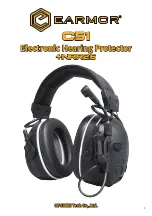
6
The Basics of Frequency Filtering
Filter Types
There is basically only one type of filter used in the PASSEQ: The bell-filter or peak-filter.
But since the center frequency of the peak-filter, concerning the HF and LF bands, is only
marginally within the perceptible hearing range, these filters auditorily and visually rather
correspond to shelf-filters.
Shelf Filters
A shelf filter increases or decreases the energy of all frequencies above or below a chosen
frequency. Depending upon the direction of processing one refers to high frequency (HF)
or low frequency (LF) shelf filters. Beginning with the threshold frequency, the frequency
band is boosted or cut much like a shelf. The maximum boost or cut achieved at the point
furthest from the threshold frequency. The threshold frequency is usually about 3 dB less
(with the overall increase set to maximum). This gives the typical rising form of the shelf
filter’s response curve.
Peak Filters
A peak filter boosts or cuts a chosen frequency‘s energy with a maximum amplitude and a
definable frequency range around this frequency with a fall off of up to 3 dB to both sides.
The chosen frequency with the maximum amplitude is called center frequency—it takes
place in the middle at the peak of the response curve. The response curve forms a bell,
thus peak filters are also often referred to as bell filters
Bandwidth
The width of a frequency range or band is musically defined in octaves. The technical
counterpart to this is the “Quality” of a filter, and the abbreviated “Q” is the most com-
mon value for the bandwidth of a filter.
A high Q value means a narrow bandwidth while a smaller Q factor corresponds to a wider
one:
Bandwidth 2 Octave: 0.7 Q
Bandwidth 1 1/3 Octave: 1 Q
Bandwidth 1 Octave: 1.4 Q
Bandwidth 1/2 Octave: 2.8 Q.
Содержание Passeq
Страница 1: ...PASSEQ Passive Mastering Equalizer Test Report Manual Handbuch...
Страница 2: ......
Страница 3: ...PASSEQ Passive Mastering Equalizer Manual...
Страница 4: ......
Страница 25: ......
Страница 26: ......











































